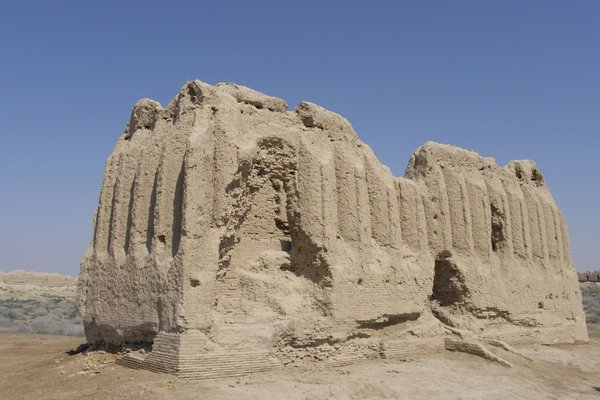Turkmenistan
Ancient Merv
The State Historical and Cultural Park “Ancient Merv” comprises the multi-layered remains of a major Central Asian oasis city.
This location within the Murgab River oasis was home to a series of cities from the Bronze Age, the Iron Age, the 9th century Arabic Caliphate and the Seljuk Empire. The Seljuk city was walled and held a major religious complex, of which the Mausoleum of Sultan Sanjar with its brickwork and mural paintings remains.
Community Perspective: an extensive site, and “a guide is really needed in Merv as mud wall succeeds mud wall”.
Site Info
Official Information
- Full Name
- State Historical and Cultural Park "Ancient Merv" (ID: 886)
- Country
- Turkmenistan
- Status
-
Inscribed 1999
Site history
History of Ancient Merv
- 1999: Inscribed
- Inscribed
- Type
- Cultural
- Criteria
- ii
- iii
Links
- UNESCO
- whc.unesco.org
- Related
-
- en.wikipedia.org — Link
All Links
UNESCO.org
- whc.unesco.org — whc.unesco.org/
Related Resources
- en.wikipedia.org — Link
Community Information
- Community Category
- Archaeological site: Near Eastern
Travel Information
Recent Connections
-
Works by Thomas Pynchon
"At Merv the tracks swung leftward into…
-
No Map
There is a (very poor) one in the nomin…
-
Perfect Inscriptions
1999
Connections of Ancient Merv
- Individual People
-
-
Alexander the Great
Known as "Alexandira Margiana" See link. Also from the Nom File - "The oasis formed part of Alexander the Great's empire, and Pliny (NH VI, 16-17) suggested that the Hellenistic city was founded by Alexander".See www.livius.org
-
- Trivia
-
-
Former Largest Cities
Around 1150 A.D. -
On Banknotes
Sultan Sanjar Mausoleum; 100 manat; 1995
-
- History
-
-
Silk Roads
Classic Land Route; the oldest and most completely preserved of the oasis cities along the Silk Roads in Central Asia. The cities of the Merv oasis have exerted considerable influence over the cultures of Central Asia and Iran for four millennia. (AB ev) -
Mongol Invasions
"This brilliant flowering came to a violent end in 1221-22, when it was sacked by the Mongols, who slew many of its inhabitants and destroyed the complex water system." (AB ev) -
Seljuk Empire
capital of the Great Seljuks Empire at the 11th-12th centuries (AB ev) -
Parthian Empire
"It was occupied for some 1500 years, throughout the Parthian and Sasanian periods and into the early Islamic period. It has been suggested that Greek and Roman soldiers, survivors of the crushing Parthian defeat of the Romans at Carrhae in 53 BC, may have been settled at Margiana" (AB ev) -
Located in a Former Capital
Abbasids -
Abbasid Caliphate
AB: "Numerous major events and personalities of historic importance have been associated with Merv. These include Abu Muslim, who initiated the Abbasid revolution..." -
Bronze Age
Five early settlements have been uncovered
-
- Damaged
-
-
Destroyed during invasion
Destroyed by the Mongols in 1221
-
- World Heritage Process
-
-
No Map
There is a (very poor) one in the nomination file
-
First inscriptions
Turkmenistan 1999 -
Perfect Inscriptions
1999
-
- Religion and Belief
-
-
Notable mosques
Several, including the mosque-mausoleum complex of Sultan Sanjar and the 12th century Seljuk Talkhattan Baba Mosque -
Stupa
Remains of a Buddhist stupa at Gyaur Kala -
Buddhist sites in non-Buddhist countries
Remains of a Buddhist stupa at Gyaur Kala
-
- Human Activity
-
-
Ongoing Archaeological digs
University College London . Ecavation of Sultan Kala active in 2010See www.ucl.ac.uk
-
- Constructions
-
-
Moats
"Erk Kala (20ha), is a walled and moated polygonal site with walls surviving to some 30 m and an internal citadel." (OUV) -
Dovecotes
The citadel of Shahriyar-ark contains the remains of several buildings, including a dovecote. This dovecote is sometimes referred to as "Kempter Khana." While some debate exists among archaeologists regarding its exact purpose (whether it was solely a dovecote, a treasury, or a library), the presence of niches suggests its use as a pigeon house -
Mausolea
Mausoleum of Sultan Sanjar (1157), Mausoleum of Muhammad ibn Zayd (1112), plus three mausolea from the Timurid period at Geok Gumbaz -
Cisterns
at Beni Makhan Mosque -
Icehouses
Locations 886-015, 016 and 017 1st, 2nd and 3rd "of three icehouses"
-
- WHS on Other Lists
-
-
World Monuments Watch (past)
Merv Archaeological Site, Bairam Ali (2002, 2000) -
U.S. Ambassadors Fund
Documentation of the Greater and Lesser Kyz Kalas at Ancient Merv (2011), Preservation of the Bronze Age Archaeological Site of Gonur-Depe (2007), Preservation of the Bronze Age Archaeological Site of Gonur-Depe (2006) -
Global Heritage Fund
-
- Timeline
-
-
Built in the 5th century BC
The succession of cities, which together once encompassed over 1000 ha, date from the 5th century BCE to the present day. The first city was Erk Kala.See www.ucl.ac.uk
-
- Literature & Film
-
-
Works by Thomas Pynchon
"At Merv the tracks swung leftward into the desert... (Against the Day, pg. 752).
-
News
No news.
Recent Visitors
Visitors of Ancient Merv
- Adrian Turtschi
- Alexander Barabanov
- Ana
- Artur Anuszewski
- Ask Gudmundsen
- bergecn
- Bill Maurmann
- Cheryl
- Cirene Moraes
- Clyde
- czesioszpachelka
- Els Slots
- Erik Jelinek
- Eva Kisgyorgy
- Fmaiolo@yahoo.com
- Gernot
- Harry Mitsidis
- henryjiao18
- Ivan Rucek
- Janos
- Jean Lecaillon
- jonas
- KarenBMoore
- Knut
- Ludvan
- Luis Filipe Gaspar
- Maciej Gil
- Marcobrey
- Martin
- Martina Rúčková
- Michael Novins
- Mihai Dascalu
- Mikko
- Pieter Dijkshoorn
- Piotr Wasil
- Roman Bruehwiler
- Solivagant
- Szucs Tamas
- Thomas Buechler
- Timothy C Easton
- Tinamu
- Westwards
- Wojciech Fedoruk
- Zoë Sheng
Community Reviews
Show full reviews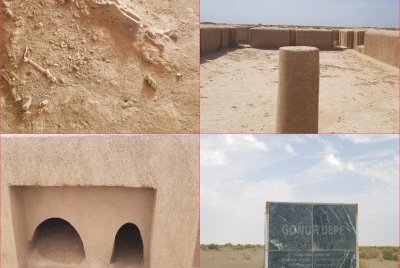
You need to see this and it's on every Turkmenistan itinerary, however, I find the places near Mary nowhere near as good as Gonur which is further north through the desert. I was very disappointed with Merv before that spot. Then I noticed there are a few dozen spots as locations for the UNESCO property and the locals say UNESCO are stupid. Well basically the sites don't connect and weren't at the same time so you are combing them because of location only.
Gonur is a marvel though. It has hardly been excavated and will take a few more excavators to give their life like Victor did here. He spent over 40 years just exploring and digging, getting Turkmenistan citizenship in the meantime and being honest about it taking forever. "Don't excavate this building, I want to see the whole site first". Nowadays you can see the palace and surroundings but all houses outside of that are buried and you are basically stepping on them constantly. You will also step on pottery but it is apparently low quality stuff.
A trip to Gonur is usually only longet tours. It takes 2 hours from Mary just to reach it. There is also no road so it's desert sand roads almost all the way.
In off-season I was able to chat with the local staff a bit as they are still excavating in Spring and Autumn. They only speak Turkmen and Russia but the guide would help a lot. …
Keep reading 0 comments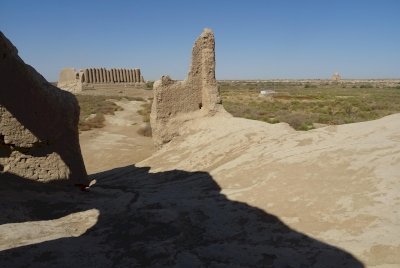
Gonur Depe and Merv belong to a very special country that I deeply recommend.
The site is composed of different and distant places which require small routes by car. It's a little bit special to see ruins of buildings dating of periods very different, that's probably why the site is laid out like this.
I remember the multitude of fragments of earthenware jars scattered on the ground, and above all the strange green vestiges of the old ovens.
My favourite building is on the joined picture, quite massive.
To finish, I met a black and white snake, so be careful ;)
Keep reading 0 comments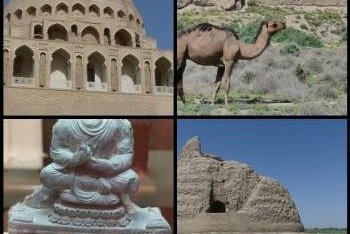
I visited this WHS in June 2017. The inscribed areas include vast stretches of semi desert land stretching from a few kilometres away from modern Mary (the Archaelogical Site of Ancient Merv) to a very long day trip some 60km away from Merv on terrible roads to Togoluk and Gonur Tepe.
The Archaeological Site of Ancient Merv is made up of different sites (top photos) relatively close to each other and with roads and small parking areas near each site. On the other hand, the sites of Gonur Tepe and Togoluk contain the remains and impressive foundations of whole settlements on an area of around 55 hectares. Most remains in the Local History Museum of Mary and in the National Museum of Ashgabat came from the these two sites. Gonur Tepe is among the largest ruins in the Morghab delta region with over 150 ancient settlements dating to the early Bronze Age. Moreover, Buddhist remains were also found here (bottom left photo). If you have an extra day in Mary, go for this worthwhile day trip, otherwise just focus on the closer sites. Apparently the lead archaeologist has passed away and further excavations are at a standstill. It is a recurring theme in all Turkmenistan's WHS and you feel as if you're trespassing in an archaeological site which is still being excavated (hopefully!).
In the archaeological site of Ancient Merv, the main highlight for me was the 12th century Great Icehouse (bottom right photo) as I had never seen anything …
Keep reading 0 comments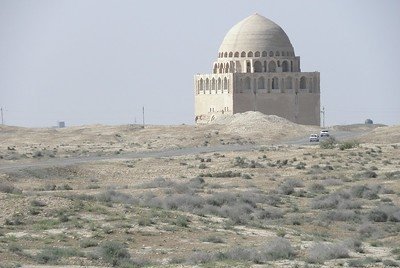
Merv is such an extensive site that I don't know how I would have visited it on my own. Probably hire a taxi and be transported from location to location. The thing about Merv is that it holds the archeological remains of 5 cities, built next to each other during different periods in time. There's a small museum near the entrance where a model of the total area can be seen, and how the different cities are positioned.
The first real sight in the park is the Mausoleum of Sultan Sanjar. It has been almost completely restored with the help of Turkish funds. This is the building that you will see in the distance over and over again from different corners of Merv park.
The next stop is at the "Forbidden City". These are just the remains of walls. We can go on / in it, without being limited to certain paths. Our obligatory Turkmen guide only is a bit worried about stray dogs (we didn't see any). On the ground lie lots of bits of coloured tiles. The Turkmen authorities haven't even begun proper excavations here.
The Erk-Kala is the oldest city ruin. Nowadays it is 'just' a large hill (somewhat like a tell?) on which you can climb and look out over the adjoining little oasis.
At Gyaur-Kala only some walls remain. Our attention here is mainly drawn by the resident camels that are roaming around in this part of the park.
Finally, …
Keep reading 0 comments
Those travellers who have followed the Silk Road will have become used to restored cities – Bokhara, Samarkand and Khiva in Uzbekistan. And very fine they are too. But if you venture south to Turkmenistan and visit Merv it is a very different sort of experience.
This 100 square kilometre site contains the remains of at least 5 different cities dating from the 6th century BCE through Alexander the Great and the Persians to the Seljuk Turks. At which point it was totally destroyed by Jenghiz Khan in 1221. The newer cities were built alongside (rather than “over” which is the norm in most continually inhabited sites) the old and all used mud bricks. So what you see is a jumble of walls, earthworks and misshapen buildings as they succumb to the elements.
If you are there you must have overcome the labyrinthine bureaucracy of Turkmenbashi (“Father of the Turkmen”) to get a visa. Indeed you will already be totally overwhelmed by his cult of personality – the gold statues, the photos, the books, the carpets with his picture on, the marble palaces, even his gold monogram in the corner of every TV program as it spouts again the details of this magnificent cotton harvest or that world class factory.
So see Merv as an antidote – a reminder of temporal nature of states whatever their politics and whoever their leader! All will be dust one day.
If you have obtained a visa you will probably …
Keep reading 0 comments
